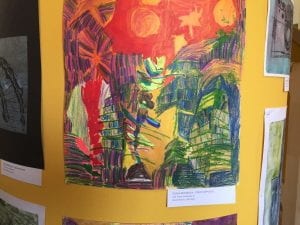 LIGHT, COLOR, ENERGY The Healing Power of the Arts
LIGHT, COLOR, ENERGY The Healing Power of the Arts
Part 1: Children’s art from around the world visits Lidice each year
Part 2: 50th anniversary of Galerie Lidice’s world-class permanent collection
Copyright 2017 by Elizabeth Cernota Clark
PART 1: Children’s art from around the world
As part of the Czech Ministry of Culture, Lidice Memorial sponsors the annual International Children’s Exhibition of Fine Arts Lidice, a competition dedicated to the lost children of Lidice and to all child victims of wars around the globe.
The winning entries for 2017, including those pictured here, are on display at Lidice Galerie June through November.
Deadline is Feb. 28, 2018, to participate in the 46th annual competition. Theme is “Water (above gold).” The theme is developed each year by the Czech Commission for UNESCO.
Please enjoy this behind-the-scenes look at production of the 2011 exhibit. The video begins with the transfer of children’s art entries from Lidice post office on the street called 10.Cervna 1942 (June 10, 1942), to the nearby Galerie Lidice, where they will be judged for the annual exhibit.
Gallery guides, below, produced each year, contain the winning entries from around the world. A brochure publicizes the following year’s theme. Take a short tour of the 2017 exhibit at Galerie Lidice with the author and Ivona Kasalicka, ICEFA Curator. Details are available at the ICEFA website.
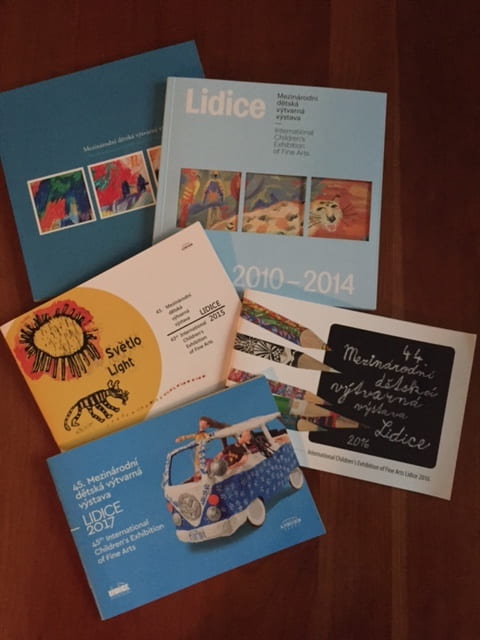
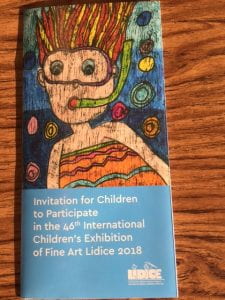
PART 2: “Remember Lidice” — works from the Permanent Collection
In 1967, the “Lidice Shall Live” committee led by the British physician and politician Sir Barnett Stross solicited artists to donate original works to be placed at Lidice. The response was a resounding “Yes.” Today, Lidice’s world-class permanent collection includes works by international artists. The 2017 exhibit, “Remember Lidice,” commemorates the collection’s 50th year.
“Even 75 years after its destruction and its subsequent renewal, Lidice is still a phenomenon in many aspects,” according to the Lidice Colleciton of Fine Arts link at Pamatnik Lidice (Lidce Memorial). “One of these aspects surely is the creativity, represented by visual arts, that was and is being awakened by the fate of Lidice to this day. The art can express the inexpressible, it is able to say more through its own means than can be said in words and perhaps it may, somehow, move the society to self-reflection.”
The 2011 documentary “Lidicka sbirka” (“Lidice Collection”), linked below, reveals the collection’s sophistication and reach. It features Rene Block, the Berlin art gallery owner who, along with Sir Barnett Stross of England, ignited the art world’s growing interest in the Lidice collection. In 1967, inspired by Stross’ appeal to artists around the world to donateto the collection, Block contacted solicited works from underground artists he knew and, in some cases, represented. He filled his VW van with their donations and crossed the border to deliver them. Luba Hedlova, curator, discusses the collection’s history in this film, produced by Pamatnik Lidice (Lidice Memorial).
English subtitles: Lidicka sbirka (Lidice Collection)
Czech only: Lidicka sbirka (Lidice Collection)
Both the permanent collection and the children’s gallery exhibit/international art competition emerged from the original “Lidice Shall Live” campaign in 1942, when Sir Barnett Stross founded it with the intent to rebuild Lidice. The vast memorial rose garden, the Rose Garden of Peace and Friendship, is a component of the “Lidice Shall Live” campaign. Today the garden connects nove (new) Lidice with the original village site. The garden blooms each year with 24,000 rose plants.
Learn about two pieces in the 2017 exhibit, “Remember Lidice, 1967-2017,” with the author and Luba Hedlova, curator of Galerie Lidice. Videos are here and here. A copy of the exhibit guide is available through Pamatnik Lidice.
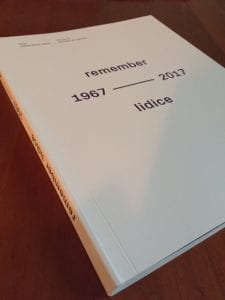
In the aftermath of World War II, artists created and donated outdoor sculptures, which were installed at the site of the old village and can still be seen today.
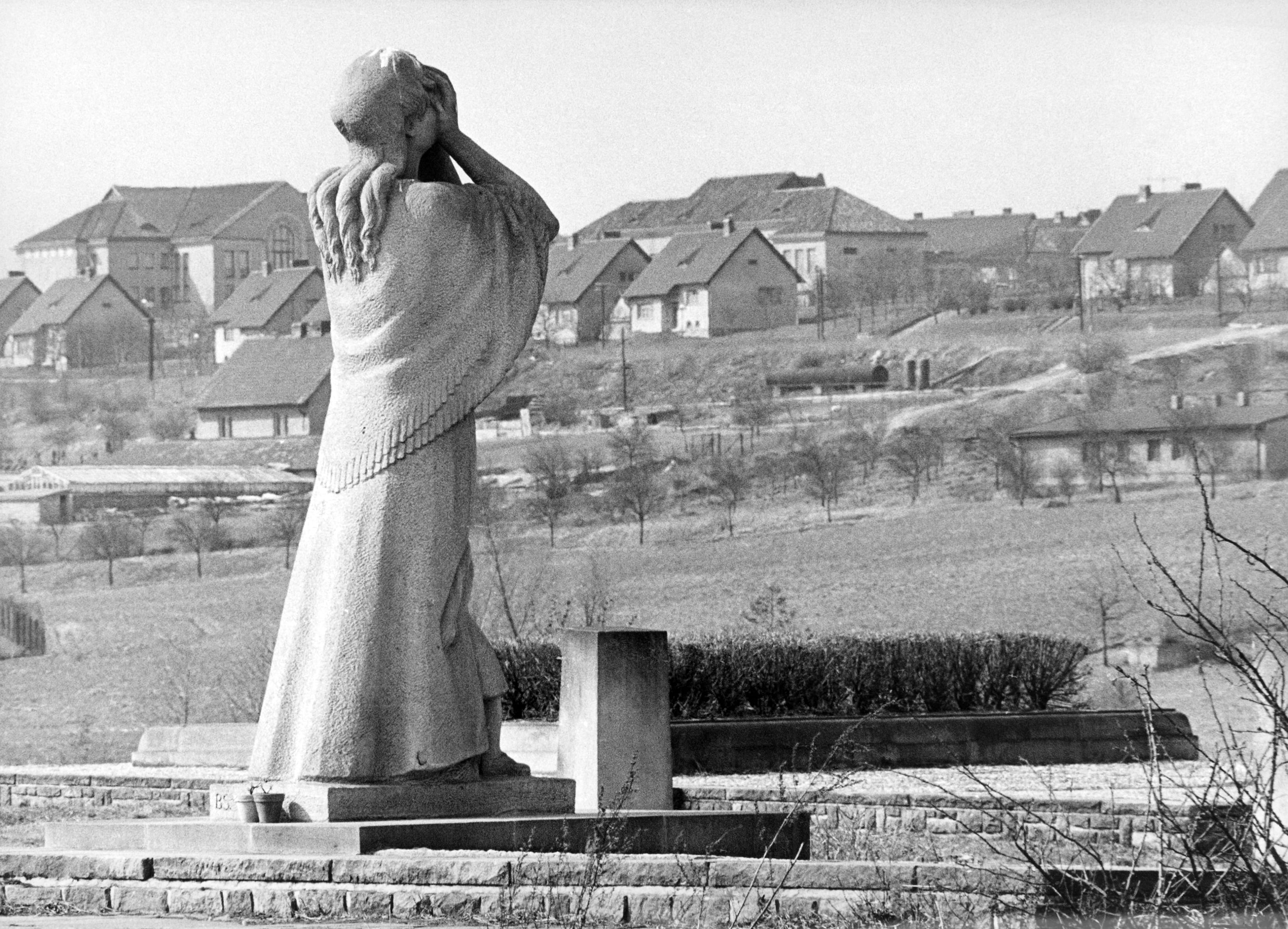
In the background is nove (new) Lidice on May 15, 1967, built after the war. In the foreground is the statue of a woman protecting her face from flames on the site of the village school, burned by Nazi troops. (AP Photo)
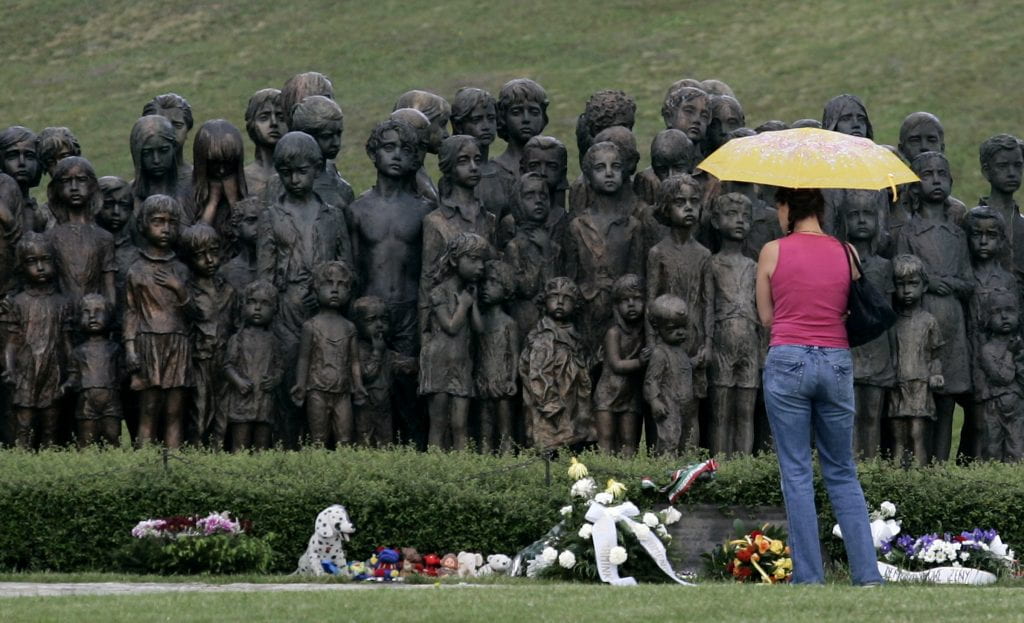
A woman stands in front of a monument to the lost children of Lidice, Czech Republic, on Sunday, June 10, 2007, during a commemoration ceremony for the victims on the 65th anniversary of the annihilation of the village in World War II. Lidice was destroyed on June 10, 1942, by Adolf Hitler’s Nazi troops after the assassination attempt and death of Reinhard Heydrich by Czech resistance fighters who had parachuted in from England. (AP Photo/Petr David Josek)
